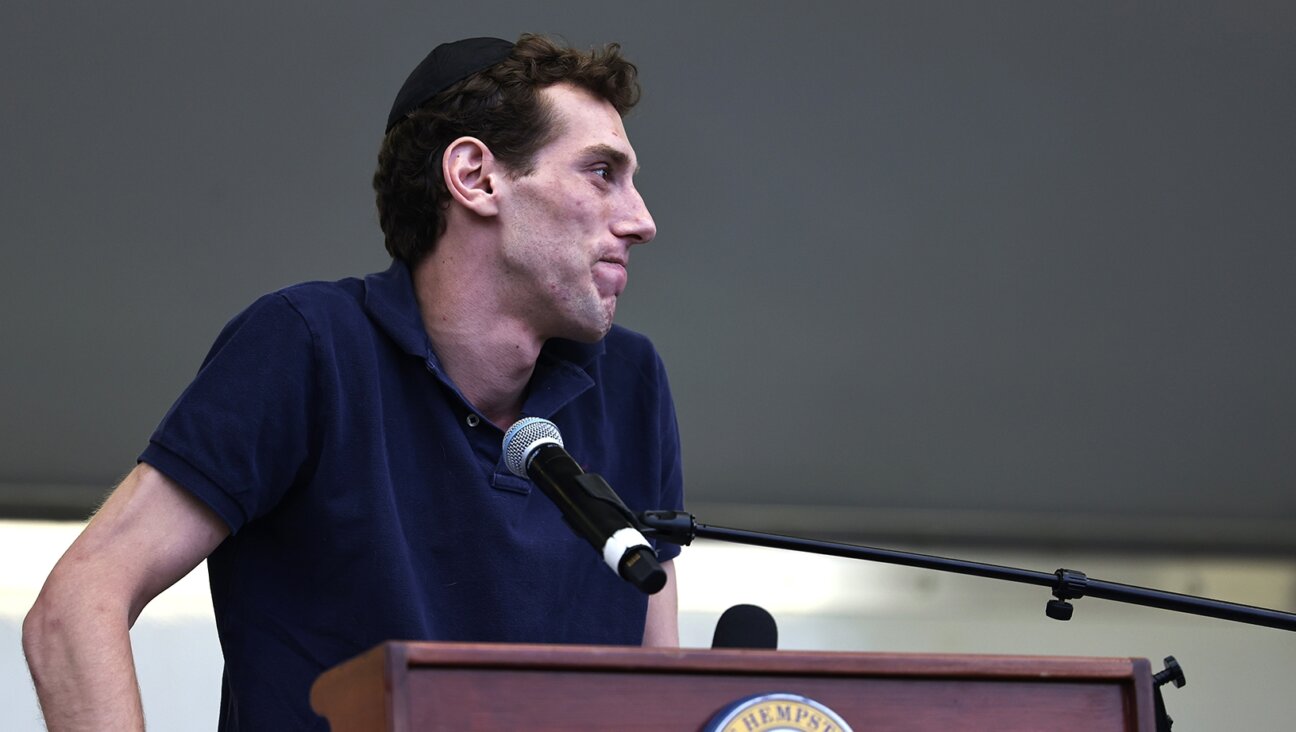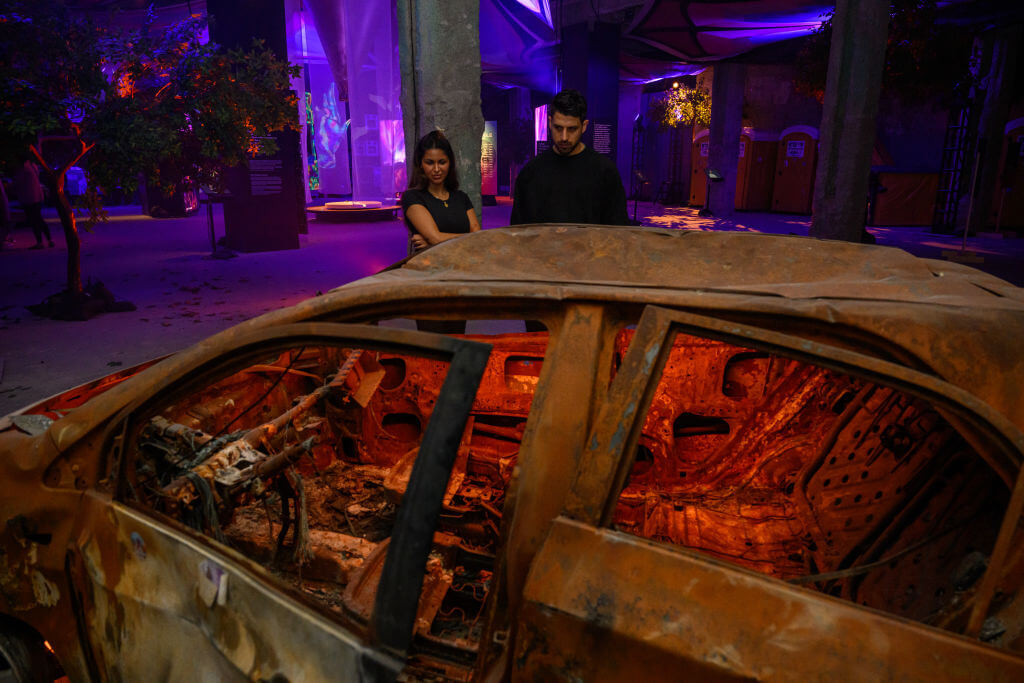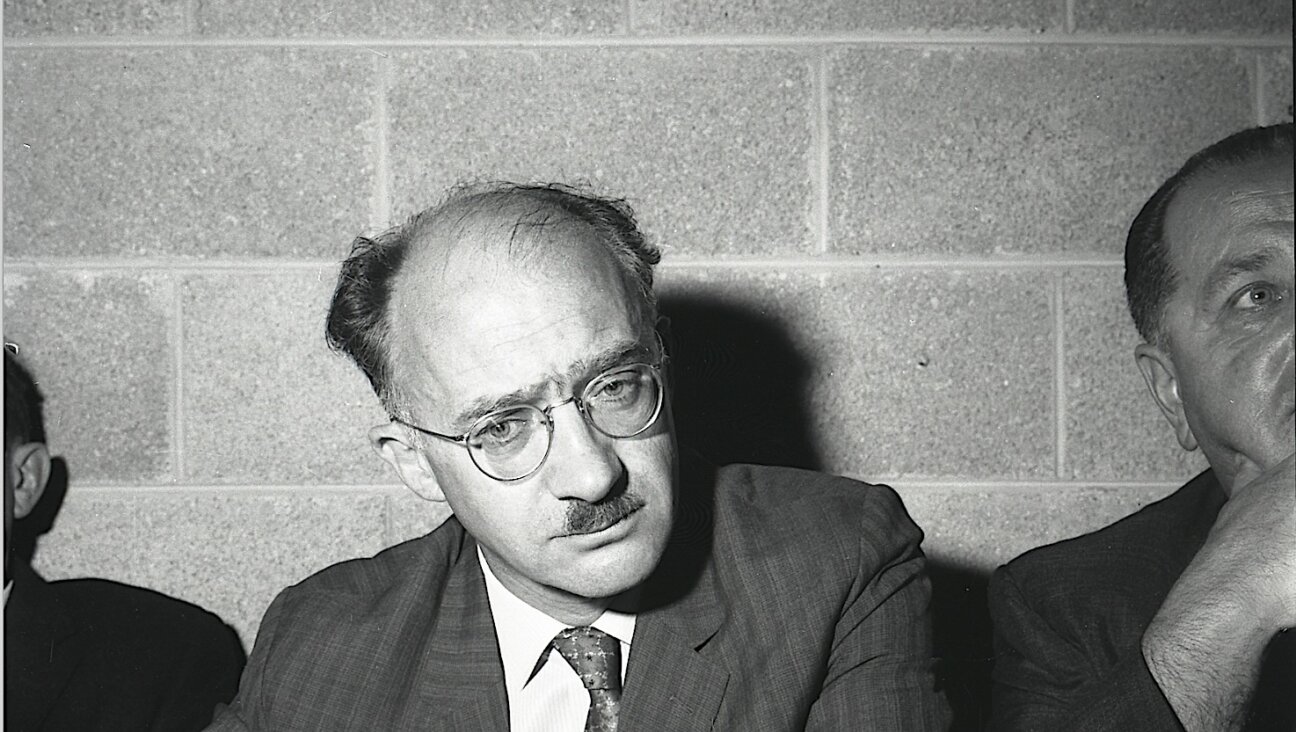Anne Frank on the Reservation
The recent discovery of a trove of letters from Otto Frank to American officials may have returned attention to the wartime plight of the Frank family, but, as an exhibition set to open in the American Southwest next month shows, Anne Frank has never really strayed far from the collective imagination — and not only for Jews.
From April 4 through May 11, New Mexico’s Bosque Redondo State Monument, a site commemorating a tragic chapter of Native American history known as The Long Walk, will host the traveling exhibition Anne Frank: A History for Today.
During the early years of the Civil War, as settlers pushed westward through the territory of New Mexico, the American army forcibly relocated some 9,000 Navajo and Mescalero Apache to Fort Sumner and the surrounding Bosque Redondo reservation, where they were held captive until 1868. Thousands died during the journey and incarceration.
“The Anne Frank exhibit,” said Mary Ann Cortese, president of the Friends of Bosque Redondo, “will help connect the tragic events at Fort Sumner to the larger context of human rights abuses that have taken place across the globe.”
While in some ways historic — Bosque Redondo is quite possibly the first Native American memory site to host an exhibition connected to the Nazi Holocaust — the joining of Native American and Jewish narratives is not entirely new. In recent decades, Native American scholars and spokespeople have often adopted the language of genocide, in some cases even the word “holocaust,” in describing the Native American experience. The sense of kinship has not been entirely one-sided. Many Jews have come to recognize in Native American history a legacy of oppression parallel to their own. And yet, the coupling has not been without its detractors. Native American scholars have been accused of being too free in their use of the language of genocide, while Holocaust scholars have been accused of being too protective of it. All the same, Bosque Redondo’s Anne Frank exhibition sheds light not only on another battle in the “memory wars,” but the long and complicated history of Jewish-Native American interaction in the Southwest, a tale that stretches back to the arrival of Spanish (and converso) settlers in the 16th and 17th centuries and continues today in the small but vibrant Jewish communities of Albuquerque and Santa Fe.
According to Albuquerque’s Henry Tobias, author of “A History of the Jews in New Mexico” (University of New Mexico Press, 1990), the relationship between Jews and Native Americans was historically more intimate than the ties between Native Americans and the settler community as a whole. “Jewish peddlers did a lot of trading with the Indians,” he said, pointing to the Jewish pioneer Solomon Bibo, who in the mid 1880s became the first non-Indian governor of the pueblo of Acamo. “He wasn’t the chief,” Tobias cautioned, “but he was an ambassador.”
Links between the two groups, Tobias said, are now tighter than ever. “They meet on various occasions as different kinds of tribes,” he said slyly. At the ceremonies surrounding the opening of a new Jewish Community Center in Albuquerque in 2000, Tobias recalled, one visiting Native American leader rose and said: “Your history is our history.”
Another local historian, Stanley Hordes, welcomed the drawing of parallels between Native American and Jewish histories. “Nobody has a monopoly on being victims of genocide,” said Hordes, the author of a recently-published book on New Mexico’s crypto-Jews. “What happened to the Navajos in the 1860s and what happened to the Jews in the 1930s inevitably begs that kind of comparison.”
But not all are so comfortable with the comparison. Literary critic and Holocaust scholar Lawrence Langer expressed some misgivings about the upcoming exhibition, arguing that the drawing of parallels between the Holocaust and other atrocities is often problematic. “To understand a particular exploitation,” he said, “you have to examine it in its own context, not in someone else’s context. That can only lead to confusion.”
Langer also had qualms about the use of Anne Frank’s diary as shorthand for the Holocaust. “People think that if you know about Anne Frank you know the whole story,” he said. “You can read the diary and not know where she went afterward, how and where she died.” In sum, Langer said, Anne Frank’s diary has been “exploited” and “overused.”
Exhibition organizers, mindful of the potential charge of misappropriation, stressed that the Anne Frank material will be handled with care.
“What we do every time we install an exhibit,” said Hilary Eddy Stipelman, programs director of the New York-based Anne Frank Center, “is we go out to the exhibit site and lead a workshop for the people giving tours to the public and train them in how to use the material.”
And then there are scholars who have argued that some Holocaust historians have been overly vigilant when it comes to the language of genocide. Chief among these has been the notorious but influential Ward Churchill, who famously said of the 9/11 World Trade Center attack that it was a matter of chickens coming home to roost — a move for which he may yet lose his position at the University of Colorado.
In his 1997 book “A Little Matter of Genocide,” Churchill argues that historians who insist on the “uniqueness” of the Holocaust — here he singles out Deborah Lipstadt, Steven Katz and Yehuda Bauer — have “contributed to the invisibility of the victims” of history’s other genocides. These “exclusivists” become, for Churchill, a species of Holocaust denier.
In a 2005 article in New York’s Jewish Week, Lipstadt said of Churchill that he is a “third-rate scholar” who “has been turned into a rock star because of the attempt to silence him.”
To further complicate the picture, there are some Native American scholars who have refused to draw parallels between Jewish and Native American narratives because of present day Middle East strife.
“I’ve had people call me and say they would like to do some sort of collaboration looking at Jewish and Diné [Navajo] historical experiences,” said Jennifer Nez Detendale, a professor of Native American history at the University of New Mexico, “and I’ve always not wanted to do that, because of what’s going on now in the Palestinian experience.”
Arguably the most unusual commentator on the Jewish-Native American connection at work today is David Treuer, a writer of fiction and a professor of English at the University of Minnesota, whose father is a Viennese Jew who left Austria in 1938 and whose mother is an Ojibwe tribal judge. Perhaps because he straddles the Jewish-Native American divide, Treuer is able to find balance where others scholars see stark divisions.
“The Holocaust,” he said, “is unique. It’s special, if you can call it that. It has its own special brand of horror. But, if anything good can come of something like that, it is by drawing attention to other ongoing processes.”
“People talk about Native American genocide and holocaust,” he continued, “but I think it’s a bit misplaced. Just a bit. I don’t think the goal was ever to completely wipe us out. In isolated instances we were definitely wiped out. Whole tribes were wiped out, but there was no systematic effort. American Indians were very much a part of America’s foundational myths. When America thinks about itself, it thinks about itself as different from Europe largely because of us. America perceives itself as being related to Indians in some way, whereas Nazis mythologized themselves without Jews. That’s a big difference.”
Gabriel Sanders is the associate editor of the Forward.
















